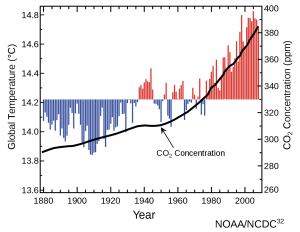Summary
1.1 The Scientific Method
There are two types of reasonings, inductive and deductive, these are the basis of hypothesis-based science. To conduct hypothesis-based science one must follow the scientific method, although this method is not always linear as listed. Make an observation, ask a question, make a prediction/hypothesis, test your hypothesis through experimentation, analyze the data and report your findings to the scientific community for peer-review. These simple steps help eliminate bias, to create a standardized, objective method to understanding how the universe works.
1.2 Navigating Scientific Figures and Maps
To understand scientific diagrams, first, determine how the data is presented (chart, table, etc.). Second, look for titles, axis labels, units, a key. Third, look for any trends in the data and begin to interpret the data, figure or table captions can help this process. Maps normally use the latitude and longitude coordination system expressed in degrees to show the exact location of the information they are presenting. Latitude is the north-south position on Earth and longitude is the east-west position on Earth.
Review Questions
- What is the difference between an observation and an evaluation?
- Using the figure below, what are the labels for the x-axis and the y-axis.

Credit: Wikimedia Commons,Public Domain
- Can you determine a person’s location based only on their latitude?

